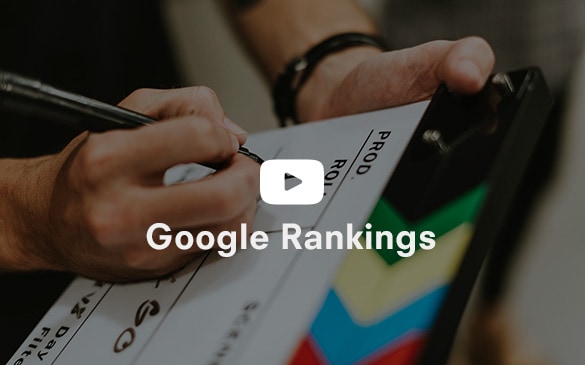WebSite Development
Your website is your #1 marketing asset.
- User Experience (UX)
- Web Design & Development
- Content & SEO

Home / Web Development
It's Time To Have A Great Website!
What makes a good website is not just it’s looks.
When done correctly, it can also be an amazing marketing asset that drives revenue growth for your business day in, day out. It has to impress the socks off your target audience (if you don’t, your competitors will) and it should truly express your brand personality with flair and flavour.
Unless it is built with the customer in mind, your website is unlikely to be performing at its best. It’s also what goes on behind the front end of the website that is important – how well is it optimised for SEO? How well was it designed with the end user in mind? How seamless is the customer journey? These are all important aspects of an impressive website and will influence how well it converts visitors.


The Definitive Guide to a High Converting Website
Strategy
It’s so important that you get your website strategy right from the start. One of the biggest mistakes we see with websites is that they don’t get the strategy right.
The Core Elements
Break down what the core elements of the website are that you need to really nail to make sure you end up with a great asset for your business.
Content is King
This is so true in today, and it’s just going to get more and more important. The content you produce is vital to the future success of your marketing.
Takes a Whole Team
It takes the whole team to be involved in building a great asset. The reason is because we want the whole website to be reflective of the whole business.
Well Built & Google
You need a really well-built website, both from an end user perspective, and from a technical perspective so that Google loves it.
Long Term Plan
It’s a long term proposition that you’re continually adding and evolving. Once you’ve built your website, you’re going to need to grow and improve this asset.
Strategy
Your website strategy is about being clear on what we need your website to do for each of your target audiences, and what user journey each segment of your target audience will need & want in order for them to engage and ultimately convert. For example, a 33-year-old male will have very different needs than a 69 year old female, yet they both may be interested in your products or services. Your strategy should incorporate:
Core messages:
Research shows that content “above the fold” attracts the most attention – your core messages should be given priority location on every page and sit above the fold. You want to make sure that your website homepage features all of your core messages in a simple and easy to digest format.
- Value Proposition: This is a statement about what value you provide to your customer.
- Sales Propositions: This is where you can demonstrate an understanding of the key challenges your audience face, and provide insights into the solutions you can provide.
- Unique Selling Propositions: This is what makes you unique and are the reasons why your target audience should choose you over your competitors.
Website appearance:
Your website needs to be visually stunning but also practical. Consider using white space, bullet points, colour/buttons/typography (to differentiate things like hyperlinks or calls to action) and images to break up the page and make it easy to read.
UX / navigation:
Google Analytics is going to reveal a lot about who your website visitors are and how they are interacting with your website. Think about how patient you are when you’re navigating the world wide web. If you can’t find what you’re looking for in a matter of seconds, bang – you’re out of there. With this in mind, you need to make accessing, navigating and interacting with your website as simple and easy as possible. Things to think about include:
- Page speed – the quicker the better.
- Simplifying forms – people don’t want to fill in loads of information. The simpler the better.
- Contact us (phone, email, live chat/messenger) – think about how and when people may want to get in touch and give them options for any time of day.
- Seamless checkout / enquiry process – where are the drop out points in your path to purchase and what is the cause? Using Google Analytics to find the answer to these questions can help uncover obstacles or issues that you may have otherwise been unaware of, such as issues with the website setup/structure, an over-complicated checkout process, or shipping cost.
- Calls To Action (CTA) – Each page should deliberately lead the user to the next phase in the customer journey. Think about what action you want the user to take after visiting each page of your website, and ensure the CTA features throughout and again at the end of the page in a simple and clear format.
Analytics
With any website project, it’s important to have the right tracking and reporting in place to record accurate data from all your digital assets. This allows us to start producing the reports we need to see what is working and isn’t working in your marketing. The main focus for us is using Google Analytics to track how people find your website, how engaged they are with your site from each digital channel, and what’s generating outcomes for your business. We will want to determine:
- What goals are set up (including phone tracking)?
- What views are set up?
- Are Google Analytics, Google Ads, Search Console all linked correctly?
- What E-commerce tracking (if relevant) is set up?
- What reporting framework is set up?
We will also conduct a website audit which will take into account your homepage, navigational structure, SEO optimisations, Sales propositions/USPs, content, user journey, about us, mobile responsiveness and lead capture ability.
Optimisation
Now that your website is up and running, technically sound and making prospects happy with a good user experience – it’s NOT the time to take your foot off the brake. Continually reviewing how your website is performing, how it looks, what messages you are broadcasting and how well you are continuing to meet the ever-changing demands of your audience is pivotal to growing your business. You want to be thinking about:
Content:
- About us page: spend a bit of time on this to really nail your brand personality, reveal insights about who you are and why you exist.
- Start a blog: this is a way to add new and fresh content to your site and gives you a reason to be sharing it on all your social networks. It also helps position you as an authority on a particular subject.
- Keyword research: after 6-12 months you really want to be conducting a thorough keyword research analysis to identify gaps in your content. You can then create content specifically around the keywords you know your target audience is searching for.
Site engagement:
How well is your target audience engaging with your website? Things to look at are: bounce rate, time on site, and behaviour (pages viewed), and the acquisition source.
Lead capture:
Capturing leads may not be the first priority when you initially launch your website, but it should definitely form part of your longer digital marketing strategy. Visitors to your site who are willing to leave their email address want to hear from you again and are therefore a qualified lead. There are lots of lead generation tactics such as providing free information (e-book, white papers or guides) or enticing visitors to sign up to newsletter for a discount off first purchase. It’s an excellent way to start building your prospect database and build an email strategy, which is still one of the highest ROI activities around.
Related Articles
The single BIGGEST problem with YOUR website!
A Successful Website Starts with the Right Website Strategy
Five Examples of Great Industrial Websites
Crafting a great website User Journey
Great SEO Results Start With A Great Website
Why a great website is the foundation to your online marketing
How do I rank higher in Google?
Give a business a lead and you feed them for a day
It’s time to do great marketing!
"*" indicates required fields

“Due North not only built us a new website, but also managed our Google Ads. They deliver what they say and we have achieved some great success through driving more customers to our business.”

“Due North has boosted our traffic and doubled our through-the-door customers in only 6 months of work! Highly recommended!”
Ben Perry

BLOG: Why a great website is the foundation to your online marketing.












